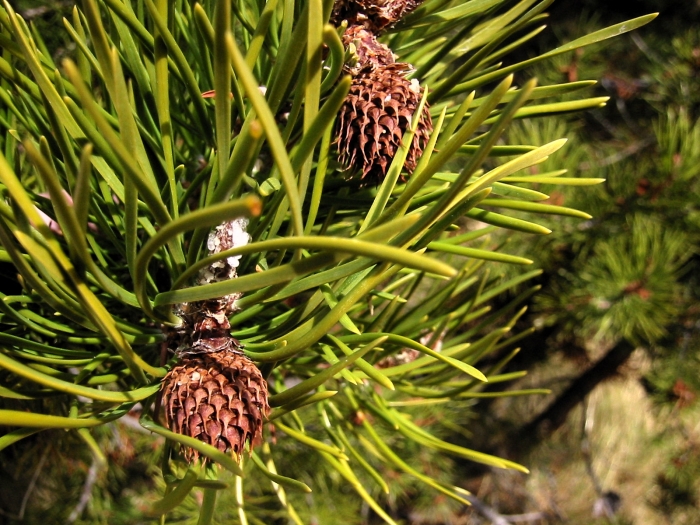Sierra Lodgepole Pine
(Pinus contorta var. murrayana)
Sierra Lodgepole Pine (Pinus contorta var. murrayana)
/
/

Walter Siegmund (talk)
CC BY 2.5
Image By:
Walter Siegmund (talk)
Recorded By:
Copyright:
CC BY 2.5
Copyright Notice:
Photo by: Walter Siegmund (talk) | License Type: CC BY 2.5 | License URL: https://creativecommons.org/licenses/by/2.5 | Uploader: Wsiegmund | Publisher: Wikimedia Commons | Title: Pinus_contorta_8160.jpg | Notes: {{Information |Description={{en|1=A large mature east side Jeffrey Pine growing on volcanic table lands south of Mono Lake, Ca. Photo taken approximately one mile east north east of Deadman's Pass, off of US HWY 395.}} |Source=I created the image on my C |








































Estimated Native Range
Summary
Pinus contorta var. murrayana, commonly known as Sierra Lodgepole Pine, is an evergreen coniferous tree native to the higher elevations of the Sierra Nevada range, as well as other mountainous areas of California, Oregon, and Baja California in Mexico. It is adapted to subalpine and montane habitats, often forming pure stands in these regions. This variety of Lodgepole Pine typically grows to a height of 30-60 feet (9-18 meters) with a narrow, conical form that becomes more irregular with age. Its needles are bright green, occurring in pairs, and the tree produces small, cylindrical cones.
Sierra Lodgepole Pine is valued for its adaptability to poor soils and harsh conditions, making it a suitable choice for reforestation projects and naturalistic plantings. It is also used for timber and as a Christmas tree. In cultivation, it requires minimal maintenance once established, thriving in full sun and tolerating drought conditions. It prefers well-drained soils and is resistant to many pests and diseases, although it can be susceptible to mountain pine beetle attacks. This pine is not typically used in small gardens due to its size and growth habit but is excellent for large landscapes and natural areas.CC BY-SA 4.0
Sierra Lodgepole Pine is valued for its adaptability to poor soils and harsh conditions, making it a suitable choice for reforestation projects and naturalistic plantings. It is also used for timber and as a Christmas tree. In cultivation, it requires minimal maintenance once established, thriving in full sun and tolerating drought conditions. It prefers well-drained soils and is resistant to many pests and diseases, although it can be susceptible to mountain pine beetle attacks. This pine is not typically used in small gardens due to its size and growth habit but is excellent for large landscapes and natural areas.CC BY-SA 4.0
Plant Description
- Plant Type: Tree
- Height: 90-100 feet
- Width: 25-45 feet
- Growth Rate: Rapid
- Flower Color: N/A
- Flowering Season: Non-Flowering
- Leaf Retention: Evergreen
Growth Requirements
- Sun: Full Sun
- Water: Low
- Drainage: Fast
Common Uses
Bird Garden, Deer Resistant, Drought Tolerant, Fragrant, Low Maintenance, Rabbit Resistant
Natural Habitat
Subalpine and montane habitats of the Sierra Nevada range, California, Oregon, and Baja California in Mexico
Other Names
Common Names: Murray’s Lodgepole Pine , Bishop Pine , Tamarack Pine
Scientific Names: Pinus contorta var. murrayana , Pinus contorta subsp. murrayana , Pinus murrayana , Pinus contorta subsp. murreyana
GBIF Accepted Name: Pinus contorta var. murrayana (Balf.) Engelm.